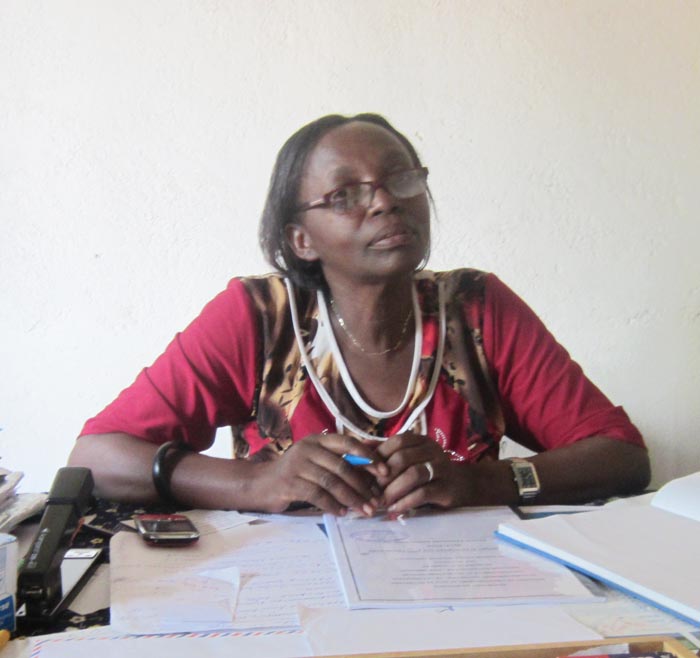Experimental schools like Kanyosha Primary School III have been created since 2010 to integrate children with disabilities. It’s a successful project because disabled children find the school as a place of development and integration.-By Yves Didier Irakoze

Marceline Mbeshiminwe: “We are satisfied that those children have got out from the hidden place and find the school as a place of development and of entertainment ” ©Iwacu
“We have 87 disabled children at our school since 2010. 48 boys and 39 girls who have visual or hearing, mental, physical or sensory problems; they are now integrated in our school,” points out Marceline Mbeshiminwe, the Headmistress of Kanyosha Primary School III. This project was launched by Handicap International to integrate disabled children (with various disabilities) through studying with normal children. The school of Kanyosha Primary III is among schools that have been chosen as experimental schools of inclusive education and they are built according to standards of people with disabilities. In fact, Handicap International constitutes a Committee of pair’s parents that has the mission to identify disabled children hidden in households. Afterwards, lessons are provided to trainers like Headmasters or Headmistresses as well as teachers. “The training focuses on the reception and integration of those disabled children at school as well as training teachers how they will proceed to teach, evaluate and take into account the level and the physical or mental conditions of those children,” states Marceline Mbeshiminwe.
The headmistress adds that this work is done by a doctor, a psychologist, a social assistant, a Headmaster or a Headmistress, a teacher, the child’s parents and the child. They develop an individual education plan like to know his/ her identity and socializing him/her because this kind of group is discriminated or they discriminate themselves. Then after 3 months, we make an evaluation to know the step this disabled child has already reached. “There are cases where a disabled child is intelligent but has a problem to write. Then the teacher should adapt to the disabled child’s situation and follows his/her pace because what is important is not rushing or ignoring his/her but it is to see that he/ she at least makes a positive step or reach a more satisfactory level than that of the beginning,” she highlights.
Both stakeholders and providers are satisfied
“We are satisfied that those children have got out from the hidden place and find the school as a place of development and of entertainment. Some have come with a lot of problems but now they are advanced,” states Mbeshiminwe. She notices that those children are sometimes discriminated and hidden by their parents at home. They don’t even give their names or register them officially. However, those children often succeed where they go. “There are some of the disabled children who were here and who are now normally advancing in secondary school and get good marks,” says Mbeshiminwe. Emelyne Mugisha, a 9years old girl with physical disability testifies that she is very satisfied and feels integrated: “before, I was mistreated by my classmates where I was studying; but since I’m at this school, I’m integrated.”
Eloi Darcy Dusabe, a 15years old boy with mental disability, on his side appreciates how he collaborates with his classmates instead of being rejected















 IWACU Open Data
IWACU Open Data

